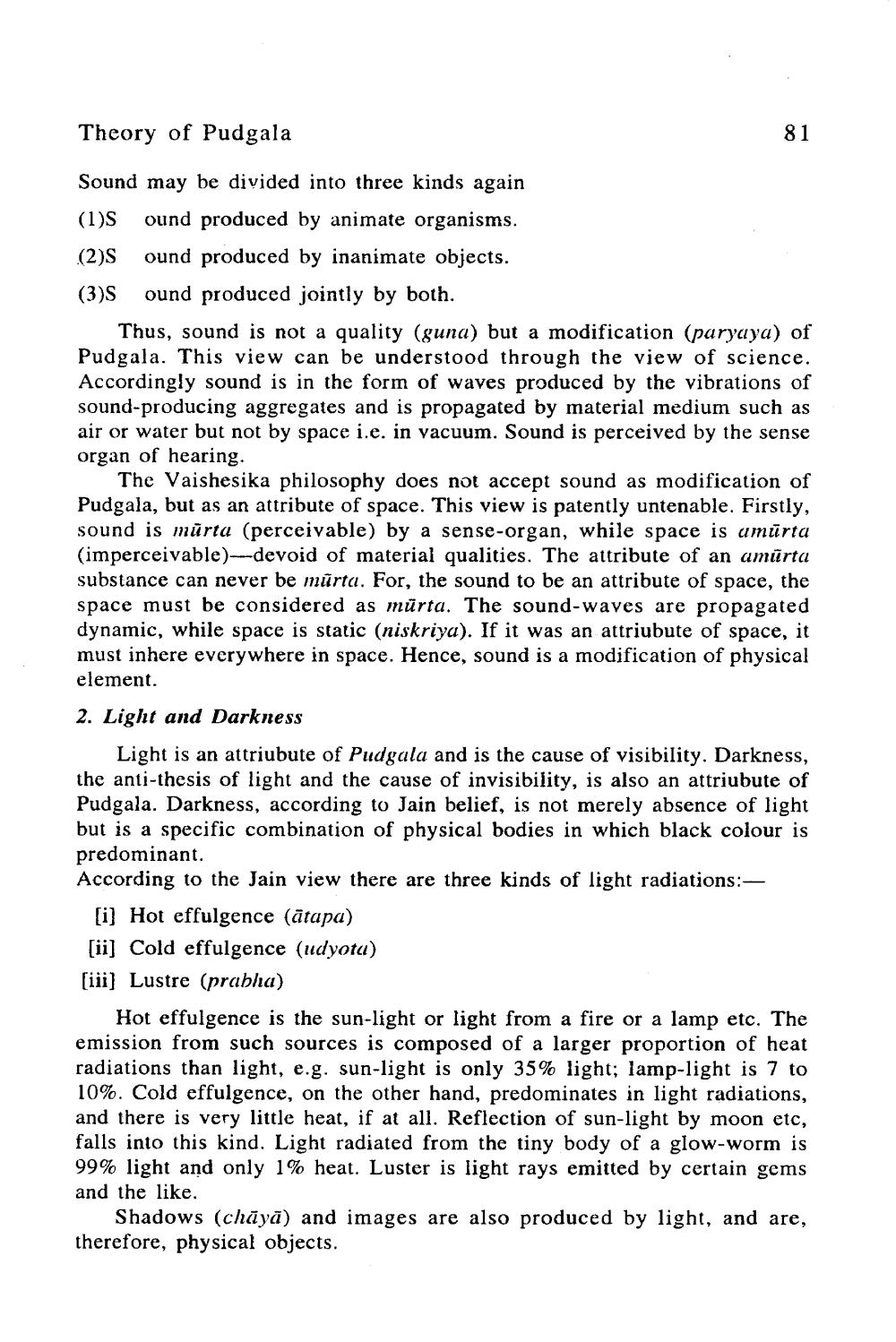________________
Theory of Pudgala
81
Sound may be divided into three kinds again
(1)
S ound produced by animate organisms. (2)
S ound produced by inanimate objects. (3) S ound produced jointly by both.
Thus, sound is not a quality (guna) but a modification (paryaya) of Pudgala. This view can be understood through the view of science. Accordingly sound is in the form of waves produced by the vibrations of sound-producing aggregates and is propagated by material medium such as air or water but not by space i.e. in vacuum. Sound is perceived by the sense organ of hearing.
The Vaishesika philosophy does not accept sound as modification of Pudgala, but as an attribute of space. This view is patently untenable. Firstly, sound is mūrta (perceivable) by a sense-organ, while space is amūrta (imperceivable)---devoid of material qualities. The attribute of an amurta substance can never be mūrta. For, the sound to be an attribute of space, the space must be considered as mūrta. The sound-waves are propagated dynamic, while space is static (niskriya). If it was an attriubute of space, it must inhere everywhere in space. Hence, sound is a modification of physical element.
2. Light and Darkness
Light is an attriubute of Pudgala and is the cause of visibility. Darkness, the anti-thesis of light and the cause of invisibility, is also an attriubute of Pudgala. Darkness, according to Jain belief, is not merely absence of light but is a specific combination of physical bodies in which black colour is predominant. According to the Jain view there are three kinds of light radiations:
(i) Hot effulgence (ātapa) [ii] Cold effulgence (udyotu) [iii] Lustre (prabha)
Hot effulgence is the sun-light or light from a fire or a lamp etc. The emission from such sources is composed of a larger proportion of heat radiations than light, e.g. sun-light is only 35% light; lamp-light is 7 to 10%. Cold effulgence, on the other hand, predominates in light radiations, and there is very little heat, if at all. Reflection of sun-light by moon etc, falls into this kind. Light radiated from the tiny body of a glow-worm is 99% light and only 1% heat. Luster is light rays emitted by certain gems and the like.
Shadows (chāyā) and images are also produced by light, and are, therefore, physical objects.




